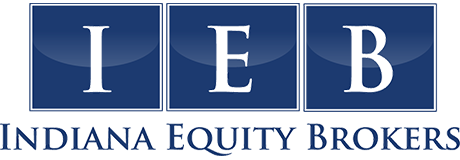
A Selling Memorandum
Comprehensive Guide to Crafting an Effective Selling Memorandum
A selling memorandum, also known as an offering memorandum, confidential descriptive memorandum, or simply “the book,” is a critical document in the sale of a middle-market company. Its primary purpose is to attract prospective buyers by providing a detailed overview of the business. This guide will walk you through the essential elements and best practices for creating a compelling selling memorandum.
Key Elements of a Selling Memorandum
A well-prepared selling memorandum includes several critical components that collectively present a comprehensive picture of the business. Here are the main sections:
1. Executive Summary
The executive summary is arguably the most crucial part of the selling memorandum. It should be concise, ideally no more than four pages, and cover the following points:
- Ownership: Details about the current ownership structure.
- Business Description: A brief overview of the business, including its history and mission.
- Financial Highlights: Key financial metrics and performance indicators.
- Products and Services: A summary of what the business offers.
- Markets: Information about the target market and customer base.
- Opportunities: Potential growth opportunities for the business.
- Reason for Sale: Explanation of why the business is being sold.
2. Business Overview
This section provides a detailed description of the company, including:
- History: Background of the company and significant milestones.
- Employees: General information about the workforce.
- Management Team: Profiles of key management personnel.
- Locations: Details about the business’s physical locations.
- Intangible Assets: Important intangible assets such as patents, trademarks, and goodwill.
- Outlook: Future prospects and strategic direction of the business.
3. Company Strengths
Highlight the strengths that make the company valuable, such as:
- Competitive Advantages: Unique selling points and competitive edges.
- Customer Relationships: Strong relationships with key customers.
- Brand Loyalty: Established brand presence and customer loyalty.
4. Markets
Provide an in-depth analysis of the market, including:
- Customer Segments: Detailed profiles of the primary customer segments.
- Sales Channels: How the company sells its products or services.
- Market Position: The company’s position within the industry.
5. Risks
Identify and explain the risks associated with the business, such as:
- Operational Risks: Potential challenges in daily operations.
- Financial Risks: Financial vulnerabilities and liabilities.
- Market Risks: Risks related to market dynamics and competition.
6. Financial Data
Include key financial statements and data, such as:
- Income Statements: Profit and loss over recent years.
- Balance Sheets: Overview of assets, liabilities, and equity.
- Cash Flow Statements: Cash inflows and outflows.
- Projections: Financial forecasts and projections.
7. Attachments
Attach any relevant corporate and product brochures, as well as an outside valuation of the business. Note that the price and terms are typically not included in the selling memorandum, as the market will dictate the final price.
Best Practices for Creating a Selling Memorandum
To ensure your selling memorandum is effective, follow these best practices:
1. Maintain Confidentiality
Do not include sensitive information such as trade secrets or customer names. Even though prospective buyers sign confidentiality agreements, it’s prudent to keep certain details private until later in the negotiation process.
2. Be Clear and Honest
Clearly state what is for sale and avoid overselling. Present both the strengths and weaknesses of the business honestly. Transparency builds trust with potential buyers.
3. Tailor to the Audience
Use technical language if necessary to explain the business accurately. Ensure that the memorandum is understandable to the target audience.
4. Highlight Corporate Culture
Describe the company’s corporate culture. This can be a deciding factor for buyers and should be evident from the outset.
5. Avoid Information Overload
Provide sufficient information to generate interest without overwhelming the reader. Focus on key points and avoid unnecessary details.
6. Include Blemishes
Disclose any potential issues, such as pending lawsuits, early on. Buyers appreciate transparency and dislike surprises during negotiations.
7. Ensure Readability
The document should be professionally written and easy to read. Avoid jargon unless it is industry-specific and necessary for understanding the business.
Conclusion
A selling memorandum is a vital tool in attracting qualified buyers and maximizing the value of a business sale. By including comprehensive and accurate information, maintaining confidentiality, and presenting the business in the best possible light, you can create a compelling document that generates interest and facilitates a successful sale.
Read More
How to Increase the Value of Your Metal Fabrication Business
To increase the value of a metal fabrication business, you can focus on several key areas. Here are some strategies to consider:
- Enhance Operational Efficiency: Streamlining your operations can lead to increased productivity, reduced costs, and improved profitability. Look for ways to optimize your manufacturing processes, minimize waste, and improve workflow. Implement lean manufacturing principles and invest in modern equipment and technologies that can improve efficiency.
- Expand Product and Service Offering: Diversify your product and service portfolio to attract a wider range of customers. Consider adding value-added services such as design assistance, prototyping, or finishing capabilities. Explore new markets and industries that could benefit from metal fabrication and develop specialized solutions tailored to their needs.
- Invest in Workforce Development: Your employees are a valuable asset. Invest in training and development programs to enhance their skills and knowledge. Encourage a culture of continuous improvement and innovation within your organization. Skilled and motivated employees can contribute to higher-quality products, increased customer satisfaction, and overall business growth.
- Develop Strong Relationships with Suppliers: Forge strategic partnerships with reliable suppliers to ensure a steady supply of high-quality raw materials. Establish long-term contracts or negotiate favorable terms to maintain cost stability. Building strong relationships can lead to better pricing, timely deliveries, and access to new materials or technologies.
- Implement Effective Marketing and Sales Strategies: Develop a strong brand identity and marketing strategy to increase your visibility in the market. Utilize both traditional and digital marketing channels to reach your target audience. Showcase your expertise, capabilities, and past projects through a professional website, social media presence, and industry events. Invest in sales efforts to actively pursue new customers and nurture existing relationships.
- Embrace Technological Advancements: Stay up-to-date with technological advancements in the metal fabrication industry. Automation, robotics, and computer-aided design (CAD) can improve precision, reduce labor costs, and increase production capacity. Assess which technologies are relevant to your business and invest accordingly to stay competitive.
- Focus on Customer Satisfaction: Put a strong emphasis on delivering exceptional customer service and satisfaction. Engage with customers to understand their needs, provide personalized solutions, and exceed their expectations. A satisfied customer is more likely to become a repeat customer and refer others to your business, which can lead to increased revenue and growth.
- Build a Strong Financial Position: Improve your financial management practices to demonstrate stability and profitability. Maintain accurate financial records, manage cash flow effectively, and minimize debt. Showing strong financial performance and potential for future growth will increase the attractiveness of your business to potential investors or buyers.
Remember that increasing the value of a business takes time and effort. It’s important to regularly assess your progress, adapt your strategies as needed, and continuously seek opportunities for improvement.
Read More